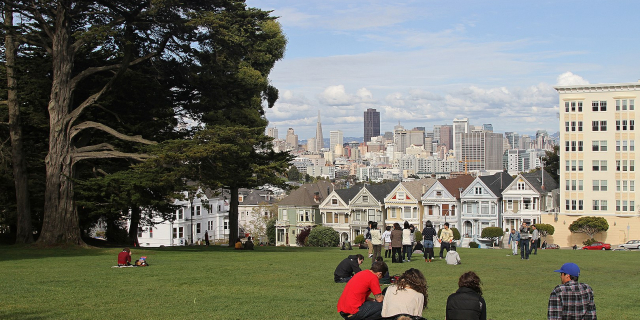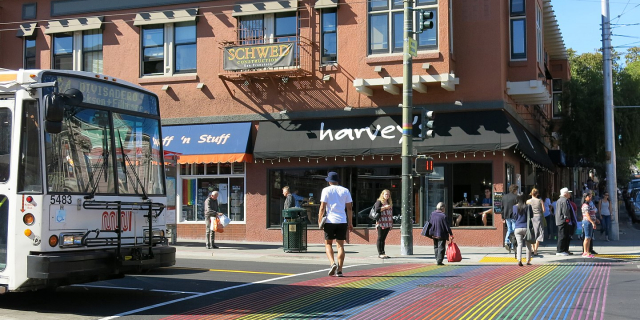Yerba Buena Tunnel
The Yerba Buena Tunnel, also known as the Yerba Buena Island Tunnel, is a highway tunnel in San Francisco, California. It is the part of San Francisco–Oakland Bay Bridge complex that crosses Yerba Buena Island. The Yerba Buena Tunnel carries ten lanes of Interstate 80 (I-80) on two decks, connecting the two component spans of the Bay Bridge, the western suspension span and the eastern self-anchored suspension span. At the opening of the Bay Bridge in 1936, it was the world's largest-bore tunnel.
Preliminary surveys to lay out the route of the planned Bay Bridge were held in April 1931.[1] Dedication ceremonies were held on February 24, 1932,[2] and by April 1932, the final design for the Bay Bridge, including the single-bore tunnel through Yerba Buena Island, had been completed and submitted for approval.[3] The contract to build the Yerba Buena Cable Anchorage, Tunnel & Viaduct segment was opened for bids on March 28, 1933, and awarded to the low bidder, Clinton Construction Company of California, for $1,821,129.50 (equivalent to $32.9 million in 2022[4]).[5][6] Yerba Buena Island was the main site of the official groundbreaking for the Bay Bridge on July 9, 1933, when President Franklin D. Roosevelt remotely set off a dynamite blast on the eastern side of the island at 12:58 p.m. local time.[7][8] Former President Herbert Hoover and Governor James Rolph were onsite; the two men were the first to turn over the earth with ceremonial golden spades.[9] Other ceremonies took place simultaneously in San Francisco (on Rincon Hill) and Oakland Harbor.[7][10]
The Yerba Buena Tunnel opened, along with the rest of the Bay Bridge, on November 12, 1936. As of 2019,[update] the tunnel lacks an official name.[11]
CorrosionOn January 30, 2016, a chunk of concrete the size of an automobile tire fell from the tunnel wall into the slow lane of eastbound traffic on the lower deck of the Yerba Buena Tunnel, causing a minor accident. The concrete fell from where the upper deck is connected to the tunnel wall. Based on an examination of photographs, a professor from Georgia Tech postulated that water infiltration into the concrete wall had caused the reinforcing steel to corrode and expand, forcing a chunk of the tunnel wall out.[12] A subsequent California Department of Transportation (Caltrans) investigation identified 12 spots on both sides of the tunnel wall in the lower deck space showed signs of corrosion-induced damage, but no immediate risk of further spalling. The apparent cause was rainwater leaking from upper deck drains. Caltrans engineers speculated the Masonite pads had swelled due to rainwater infiltration, cracking the tunnel walls and allowing moisture in to the reinforcing steel.[13]
Repairs to the degraded concrete started in February 2017. Drains and catch basins were replaced to reduce the likelihood of clogging, and fiberglass-reinforced mortar was used to patch removed concrete. The repairs, which required some daytime lane closures, were expected to last until June 2017.[14]


































Add new comment